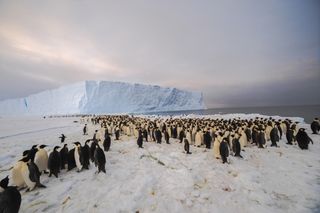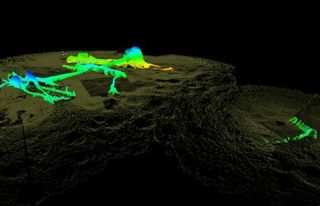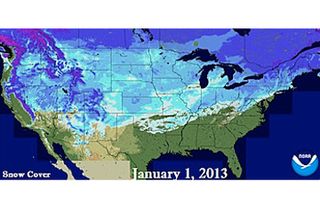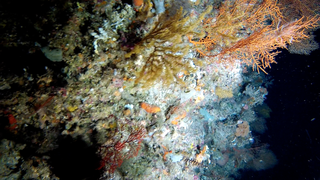
Best Earth Images of the Month January 2013
Encouraging discovery confirmed

The existence of a 9,000-strong colony of emperor penguins in East Antarctica has been confirmed by three people who visited it for the first time.
Signs of the penguins were spotted by satellite, which took images of large stains on the snow in 2009 that scientists suspected were penguin feces. But it wasn't until early December 2012 that three people from Belgium's Princess Elisabeth Antarctica polar research station visited the colony to glimpse the penguins for themselves, according to a statement from the International Polar Foundation, which runs the station.
[Full Story: Humans Visit Huge Penguin Colony for First Time]
Ancient wreck revealed

On this day (Jan. 11) in 1853, a Union warship was sunk in a skirmish with a Confederate vessel in the Gulf of Mexico.
Exactly 150 years later, a new 3D map of the USS Hatteras has been released that shows what the remains of the warship look like. The Hatteras rests on the ocean floor about 20 miles (32 kilometers) off Galveston, Texas, according to a release from the National Oceanographic and Atmospheric Administration, which helped to sponsor the expedition to map the shipwreck.
[Full Story: New 3D Map of Civil War Shipwreck Released]
Record-breaking start to the year

With 67 percent of the contiguous U.S. covered by snow, the first day of 2013 marked the widest coverage of snow the U.S. has seen on Jan. 1 in the past ten years.
The previous record was set in 2010, when the new year saw 61 percent of the U.S. beneath snow. That same season was marked by the blizzard nicknamed 'Snowmageddon,' in the mid-Atlantic, which set a long list of records in cities such as Philadelphia, DC and Baltimore.
[Full Story: January 1 Snow Coverage Sets New Record for US]
Survival in the deep

Even four times as deep as most scuba divers venture, the Great Barrier Reef blooms. A new exploration by a remote-operated submersible has found the reef's deepest coral yet.
The common coral Acropora is living 410 feet (125 meters) below the ocean's surface, a discovery that expedition leader Pim Bongaerts of the University of Queensland called "mind-blowing." The group had previously seen the coral living in the reef at a depth of about 200 feet (60 m).
[Full Story: Deepest Corals in Great Barrier Reef Discovered]
Sign up for the Live Science daily newsletter now
Get the world’s most fascinating discoveries delivered straight to your inbox.












